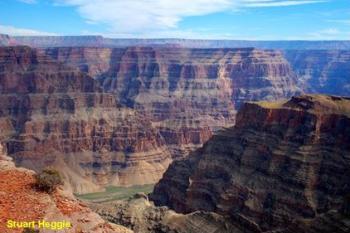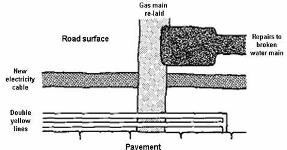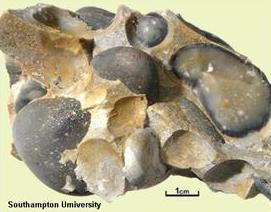Geological Time
Geological Time: Putting the rock layers in order:
 The photo (left) shows rock layers in the Grand Canyon. Which layer was formed first - the one at the bottom or the or the one at the top?. Clearly, unless the layers have somehow been turned upside-down (e.g. due to folding), then the layer at the top must be youngest.
The photo (left) shows rock layers in the Grand Canyon. Which layer was formed first - the one at the bottom or the or the one at the top?. Clearly, unless the layers have somehow been turned upside-down (e.g. due to folding), then the layer at the top must be youngest. This rule is called the Principle of Superposition.
 The drawing shows a repaired road surface. Can you tell the order in which the repairs were done? Can you tell if the yellow lines were painted before or after the water main was repaired?
The drawing shows a repaired road surface. Can you tell the order in which the repairs were done? Can you tell if the yellow lines were painted before or after the water main was repaired?This is an example of the Law of Cross-cutting Relationships. If, for example, a dyke or fault cuts through layers of rock, then it must be younger than the layers which it cuts through.

One more useful rule is the Law of Included Fragments. Suppose, for example, a conglomerate contains pebbles of an igneous rock. Which is older, the sedimentary conglomerate, or the pebbles of igneous rock that are contained (included) within it? The igneous rock must have formed before the processes of erosion and transport produced the pebbles that were later deposited to form conglomerate.

An 18th-century canal engineer, William Smith, got interested in fossils. He worked out, using simple rules like those above, that the different fossils he found in the rock layers were of different ages. He also used fossils to work out whether rocks found in different places were of a similar age or not.
This helped him to group rock layers into “time periods” according to the fossil groups they contained, and to produce the first Geological Map of Britain, which also showed the correct order in which the rocks were formed.

